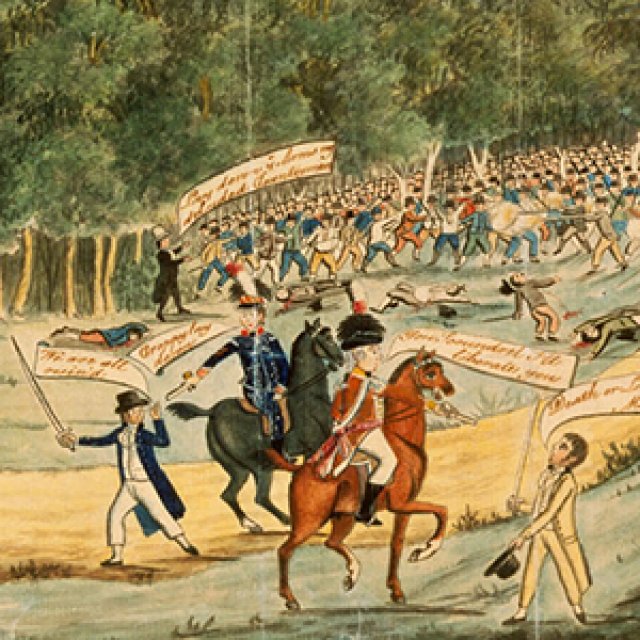
Despite the wet weather, the commemoration of the 213th Anniversary of the Battle of Vinegar Hill went ahead at the Vinegar Hill Monument in the grounds of Castlebrook Memorial Park on March 5.
A plaque in memory of Tomas O'Gliasain, also known as Thomas Gleeson, was unveiled by his widow Christine. Gleeson has contributed to the commemoration for the past 20 years and worked tirelessly over that time to keep the event going.
The Battle of Vinegar Hill refers to the clash between convict prisoners and soldiers on March 5, 1804 following on from the Castle Hill uprising the night before. Because the leaders of the rebellion were Irish, its name was taken from the United Irishmen's rebellion at Vinegar Hill, in County Wexford, Ireland, in 1798.
Many Irish political prisoners were sent to Australia after their defeat at that time. Those who fought a second timewore the words "Liberty and Equality" on their hat bands, as had their countrymen in Ireland.
Convicts, mainly Irish, on the government farm at Toongabbie joined with other prisoners and settlers in the district to march to Hawkesbury, then Parramatta and later Sydney. They had planned to commandeer a ship home. About 200 people joined in, battling soldiers of the NSW Regiment at the place later known as Vinegar Hill. Some of the rebels at Sydney's Vinegar Hill were veterans of the Irish Vinegar Hill.
The convicts' leader, Philip Cunningham, was sent to negoatiate with the soldiers, but was fired on. A massacre ensued, with 11 rebels killed. Another nine were caught and hanged over the next few days. Cunningham, at first thought to have died during the skirmish, was hanged without trial on the steps of the government store. His grave is located at Windsor in Sydney's west.
The exact location of the battle is no longer known, but after an inquiry in 1982, it was agreed that a spot in the Castlebrook Lawn Cemetery would be marked by a memorial. The event was first commemorated in 1983 and by Blacktown Council and Friends of Vinegar Hill a year later. A monument to the rebels was unveiled by former Prime Minister Gough Whitlam on March 5, 1988.
Like the article? Subscribe to Green Left now! You can also like us on Facebook and follow us on Twitter.